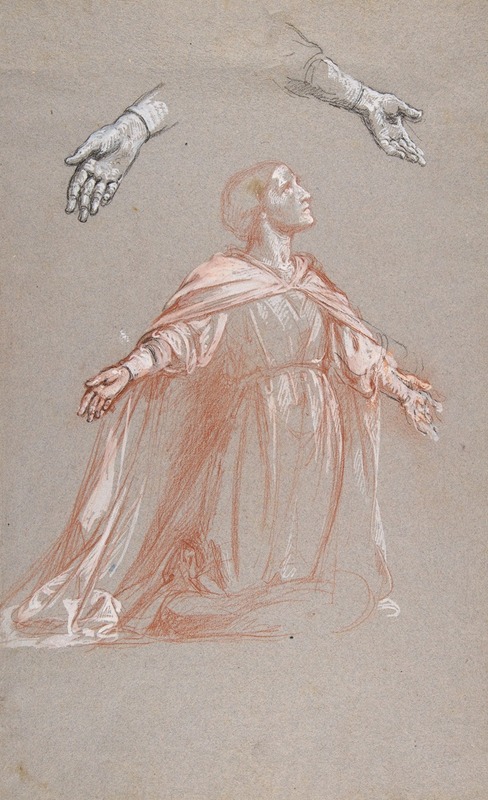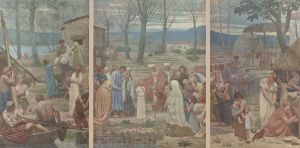
Sainte Clotilde
A hand-painted replica of Isidore Pils’s masterpiece Sainte Clotilde, meticulously crafted by professional artists to capture the true essence of the original. Each piece is created with museum-quality canvas and rare mineral pigments, carefully painted by experienced artists with delicate brushstrokes and rich, layered colors to perfectly recreate the texture of the original artwork. Unlike machine-printed reproductions, this hand-painted version brings the painting to life, infused with the artist’s emotions and skill in every stroke. Whether for personal collection or home decoration, it instantly elevates the artistic atmosphere of any space.
Isidore Pils, a notable French painter of the 19th century, is recognized for his historical and religious compositions. One of his works, "Sainte Clotilde," reflects his adeptness in capturing religious themes with a sense of reverence and historical accuracy. Although specific details about this particular painting are scarce, Pils' broader body of work provides context for understanding his artistic approach and the significance of his religious subjects.
Isidore Pils was born on July 19, 1813, in Paris, France. He studied under François-Édouard Picot at the École des Beaux-Arts in Paris, where he honed his skills in classical painting techniques. Pils gained recognition early in his career, winning the prestigious Prix de Rome in 1838 for his painting "Saint Peter Healing the Lame Man at the Door of the Temple." This accolade allowed him to study in Rome, where he was influenced by the works of the Italian Renaissance masters, which is evident in his later works.
The subject of Sainte Clotilde, or Saint Clotilde, is a significant figure in French history and Catholic tradition. Clotilde was the wife of Clovis I, the first King of the Franks to unite all of the Frankish tribes under one ruler. She is credited with playing a crucial role in the conversion of Clovis to Christianity, which had a profound impact on the religious landscape of medieval Europe. Her piety and influence are celebrated in various religious artworks, and she is venerated as a saint in the Roman Catholic Church.
In depicting Sainte Clotilde, Pils would have drawn upon his classical training and his ability to convey narrative through composition and expression. His paintings often feature meticulous attention to detail, a characteristic that would have been employed to capture the regal and devout nature of Clotilde. Pils' use of light and shadow, along with his skillful rendering of fabrics and textures, would contribute to the painting's overall impact, inviting viewers to reflect on the spiritual and historical significance of the subject.
Pils' religious paintings are known for their emotional depth and clarity, qualities that likely characterize "Sainte Clotilde." His ability to depict sacred themes with both reverence and accessibility made his works popular in ecclesiastical settings, where they served both as objects of devotion and as educational tools for the faithful.
Throughout his career, Isidore Pils received numerous commissions for religious and historical paintings, many of which were intended for public spaces such as churches and government buildings. His works were well-received by both the public and critics, and he was awarded several honors, including membership in the Académie des Beaux-Arts.
While specific information about the painting "Sainte Clotilde" by Isidore Pils is limited, understanding Pils' artistic style and the historical context of Sainte Clotilde provides insight into the likely themes and execution of the work. Pils' legacy as a painter of religious and historical subjects remains significant, and his contributions to 19th-century French art continue to be appreciated for their technical skill and narrative power.


















